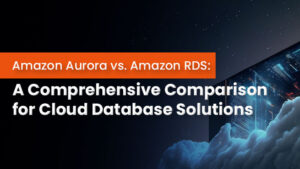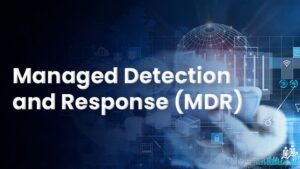Introduction
Oracle’s converged database 21c generation provides customers with best-in-class support for all data types (e.g., relational, JSON, XML, spatial, graph, OLAP, etc.), as well as industry-leading performance, scalability, availability, and security for all operational, analytical, and other mixed workloads.
21c is the most recent and innovative method of delivering cutting-edge technology to our customers, allowing them to begin evaluating new applications today and be ready for the next long-term support release. Oracle Database 19c is our current long-term support release. This article covers detailed knowledge of Oracle Database 21c.
21c Architecture
An Oracle database architecture is like the older version. The following diagram shows it consists of Oracle database instances and Oracle database.

Oracle Database 21c Technical Architecture
The database instance consists of memory structures (SGA known as Shared Global Area & PGA) and background processes to perform tasks such as executing queries on behalf of users with the help of server processes, fetching data from the disc, writing data on datafiles or redo log files, storing execution plans, and so on.
The instance and database have a one-to-one relationship in the single database design. Multiple single instances can be installed on the same server. However, each instance will have its database.
A database architecture for Oracle Real Application Clusters (Oracle RAC) consists of numerous instances that run on different servers. They all use the same database. On one end, the group of server machines represents a single server, while on the other, users and applications. High performance, scalability, and availability are all features of this arrangement.
An instance of the database server is the listener. Once a connection has been made to the database instance in response to client requests, it transfers control of the client connection to the server process. The listener may run remotely or locally on the database server. Remote operations are the norm for Oracle RAC settings.
Oracle 21c Features
The 21c generation supports all data types, such as relational, JSON, XML, spatial graph, OLAP, etc.
It saves JSON data as an ARCHAR2 or a LOB (CLOB or BLOB), allowing developers to create applications with the flexibility of a schematic design approach. For example, a user can use SQL to query JSON data and do advanced analytics, index particular attributes or entire documents, and process billions of JSON documents in parallel. JSON support in Oracle Database 21c is expanded further by adding a native data type, “JSON.”
This means that instead of needing to parse JSON during read or update activities, the parsing occurs only during insert operations, and the JSON is then stored in an internal binary representation, making access much faster. This can result in 4 or 5 times quicker read and update operations and 20 to 30 times faster changes to massive JSON data.
Executing Javascript Inside Oracle Database
It runs the Javascript code inside the database using the Multi-Language Engine (MLE) and a new PL/SQL package called DBMS_MLE. Java script offers richer user interaction in online and mobile applications. It is one of the few languages that can be used to build both server and client-side code in a web browser.
JavaScript libraries are widely available for building sophisticated programs, and JavaScript integrates with common development platforms such as JSON and REST. In Oracle 21c, developers can run Javascript code within the database where the data is stored. It enables them to do small computational operations in Java script without moving their data to the browser’s mid-tier. MLE automatically maps Java script data types to Oracle Database data types and vice versa, removing the need for developers to perform data type conversion.
SQL queries naturally get more difficult as the number of joins increases or data retrieval becomes more intricate, and developers overcome this problem by employing stored procedures and functions to simplify these operations. However, performance may suffer as the SQL engine swaps context with the PL/SQL Engine. SQL Macros in Oracle 21c fix this problem by replacing SQL expressions and table functions with calls to stored procedures that return a string literal to be inserted in the SQL you want to run.
A columnar structure can improve performance over a row-based approach when analyzing data. Though updating data is faster in the row model, Oracle database in-memory features allow us to use both models depending on our needs. Users can run their applications unchanged, and in-memory will maintain a columnar store that supports fast, real-time analytical queries.
New Innovations in Oracle Database 21c
Immutable Blockchain Tables
Blockchain Tables extend blockchain technology’s principal security features to enterprise applications. Blockchain Tables, a component of Oracle’s Crypto-Secure Data Management, enable immutable insert-only tables with cryptographically chained rows. Customers can defend themselves against unauthorized changes by insiders or hackers impersonating administrators or users by directly providing tamper detection and prevention features in the Oracle Database.
Oracle has supplied robust SQL/JSON query and indexing functionality for many years. Database 21c introduces a new JSON data type representation, allowing up to 10x quicker scans and 4x faster update operations. On the YCSB benchmark, these enhancements make Oracle SQL/JSON 2x quicker than MongoDB and AWS DocumentDB. Users can mix and join JSON and other data types, index any JSON element for fast OLTP, use declarative parallel SQL analytics across all formats, and conduct complicated joins over many JSON documents and collections, just like in prior iterations.
AutoML for In-Database Machine Learning
Automatically generates and compares machine-learning models at scale, making machine-learning accessible to non-experts. A new AutoML user interface simplifies the usage of in-database machine learning for non-expert users. Oracle has expanded its library of popular in-database machine learning algorithms with new algorithms for anomaly detection, regression, and deep learning analysis.
Database In-Memory Automation
Oracle supports row and column formats in the same table, allowing analytics and transactions to execute concurrently. Oracle Database 21c features a Self-Managing In-Memory Column Store, which simplifies and improves efficiency by autonomously managing the placement and removal of items in the column store, then tracking usage trends and moving and evicting objects from the column store. Columns are also automatically compacted based on usage trends. Oracle Database 21c also has new in-memory vector join techniques to help perform complex queries.
Conclusion
Database 21c adds a new JSON data type representation, enabling up to 10x faster scans and up to 4x faster update operations. These improvements make Oracle SQL/JSON 2x faster than MongoDB and AWS DocumentDB on the YCSB benchmark.








